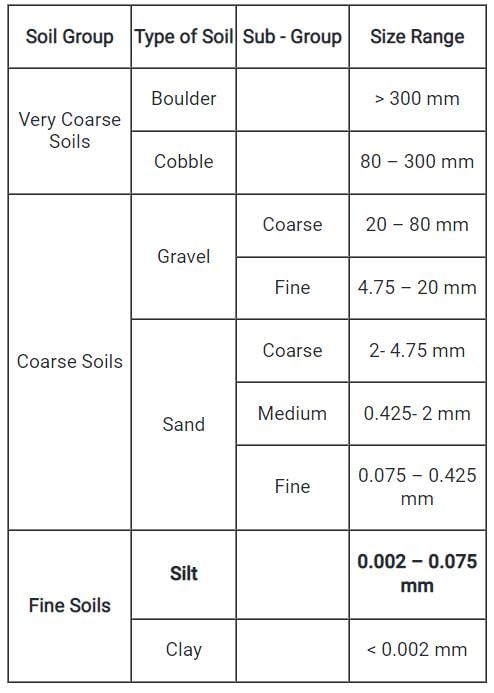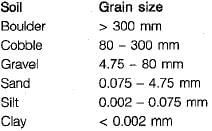Test: Soil Types & Formations - Civil Engineering (CE) MCQ
10 Questions MCQ Test - Test: Soil Types & Formations
Match List-I (Soil description) with List-ll (Coefficient of permeability, mm/s) and select the correct answer using the codes given below the lists:
List-I
A. Gravel
B. Clay silt admixtures
C. Loess
D. Homogeneous clays
List-II

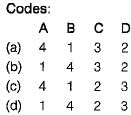
List-I
A. Gravel
B. Clay silt admixtures
C. Loess
D. Homogeneous clays
List-II


Match List-I with List-ll and select the correct answer using the codes given below the lists:
List-I
A. Loess
B. Peat
C. Alluvial soil
D. Marl
List-ll
1. Deposited from suspension in running water
2. Deposits of marine origin
3. Deposits by wind
4. Organic soil
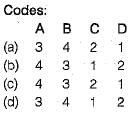
List-I
A. Loess
B. Peat
C. Alluvial soil
D. Marl
1. Deposited from suspension in running water
2. Deposits of marine origin
3. Deposits by wind
4. Organic soil

Which of the following type of soil is transported by gravitational forces?
According to IS classification, the range of silt size particles is:
Match
List-I (Type of soil) with List-ll (Feature) and select the correct answer using the codes given below the lists:
List-I
A. Lacustrine
B. Alluvial
C. Aeolian
D. Marine
List-ll
1. Transported by wind
2. Transported by running water
3. Deposited at the bottom of lakes
4. Deposited in seawater
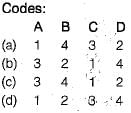
Match List-I (Range of particle size) with List-II (Type of soil) and select the correct answer using the codes given below the lists:
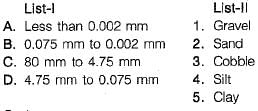
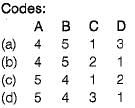
The correct increasing order of specific surface i.e. surface area per mass of the given soils is:
Consider the following statements in the context of aeolian soils:
1. The soil has low density and low compressibility.
2. The soil is deposited by wind.
3. The soil has large permeability.
Which of these statements are correct?
Bentonite is a material obtained due to the weathering of



